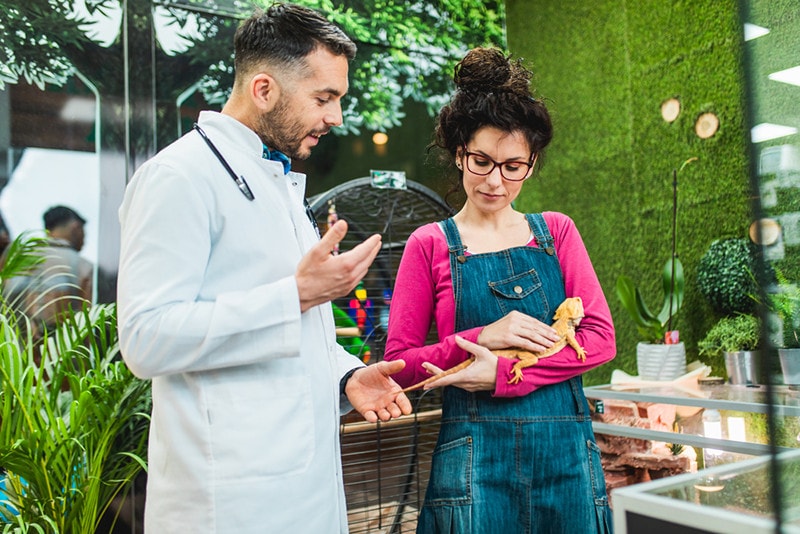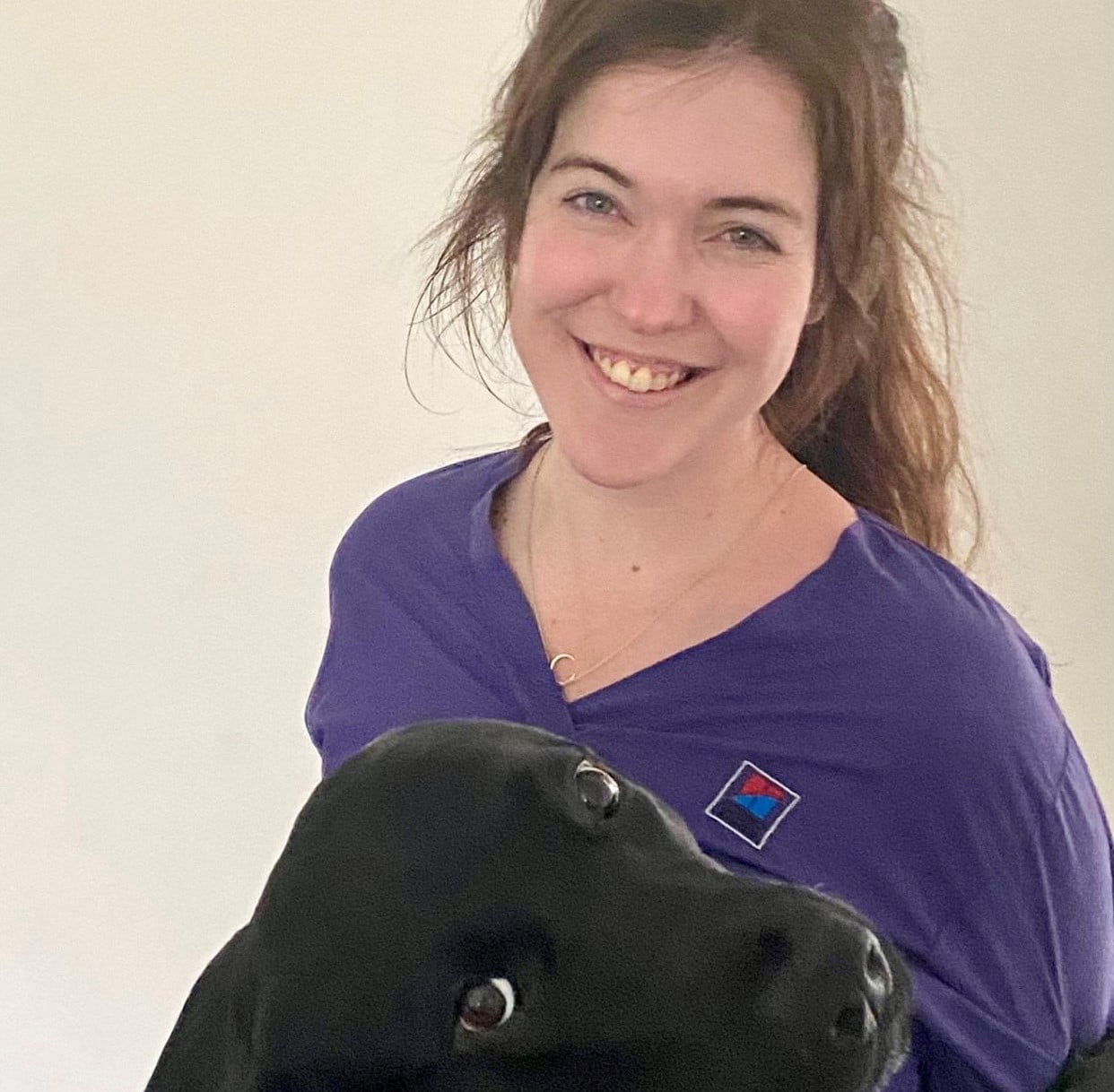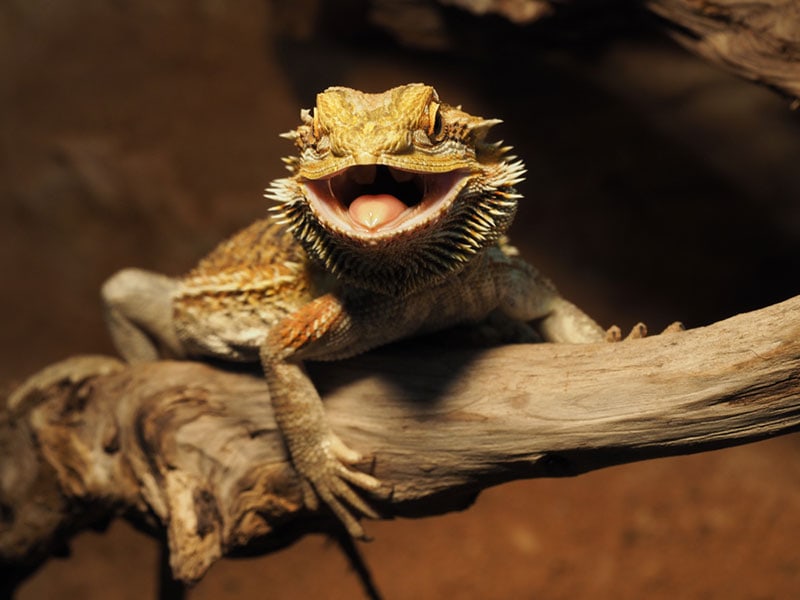Are Bearded Dragons Good Pets? Vet Reviewed Pros & Cons
Updated on
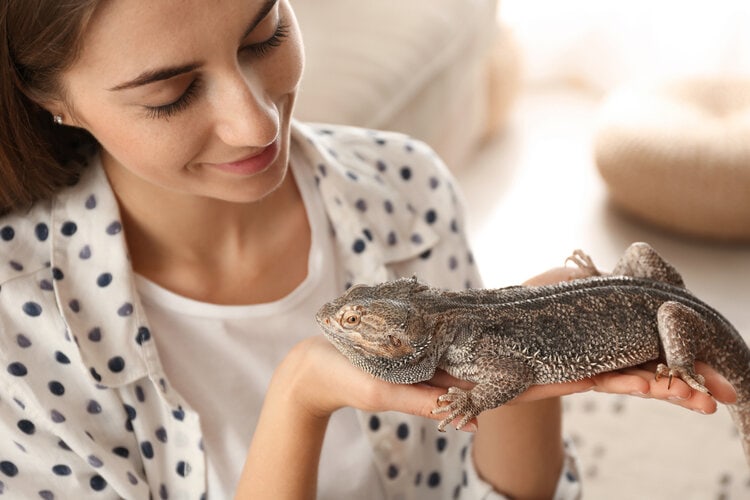
Click to Skip Ahead
Bearded dragons are extremely popular lizards among reptile enthusiasts. They’re attractive small- to medium-sized lizards with huge personalities and friendly demeanors. But their highly specific care requirements make them a challenge for even the most competent and experienced reptile owner. So yes, bearded dragons can make great pets, if you are willing to go the extra mile to take good care of them.
If you’re on the fence about bringing a beardie into your home, we can help. Read on to find the pros and cons of keeping a bearded dragon as a pet.
The 9 Reasons Bearded Dragons Make Good Pets
1. They’re not smelly.
Many household pets, like dogs, cats, and critters like guinea pigs, can be very smelly. They may also have accidents in your home and leave lingering smells that are hard to eliminate.
Bearded dragons will spend most of their time in their habitats, so any smells they produce will stay confined to their tanks but they won’t normally smell bad. You should always take note if you do start to notice a bad odor as it’s likely to be a sign that something is wrong, such as a dirty tank or it could be that your Beardie is unwell.
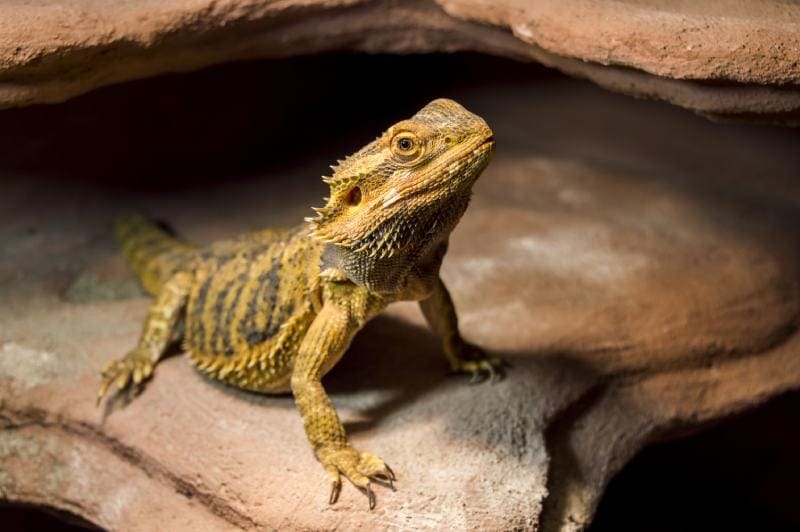
2. They’re docile.
Bearded dragons have great personalities. They’re very docile and good-natured. Most beardies are easygoing, friendly, and not skittish at all (especially if they’re bred in captivity). They enjoy human companionship and don’t mind being held by their family members.
Bearded dragons very rarely bite, so they’re great for families with children so long as there is always supervision when the two are together.
3. They don’t need to be kept in pairs.
Some exotic pets, such as guinea pigs, must be kept in pairs to stay happy. Bearded dragons are solitary creatures that prefer living alone. They don’t get lonely in solitary and actually become territorial if forced to share their space.
You should never house more than one beardie in a tank.
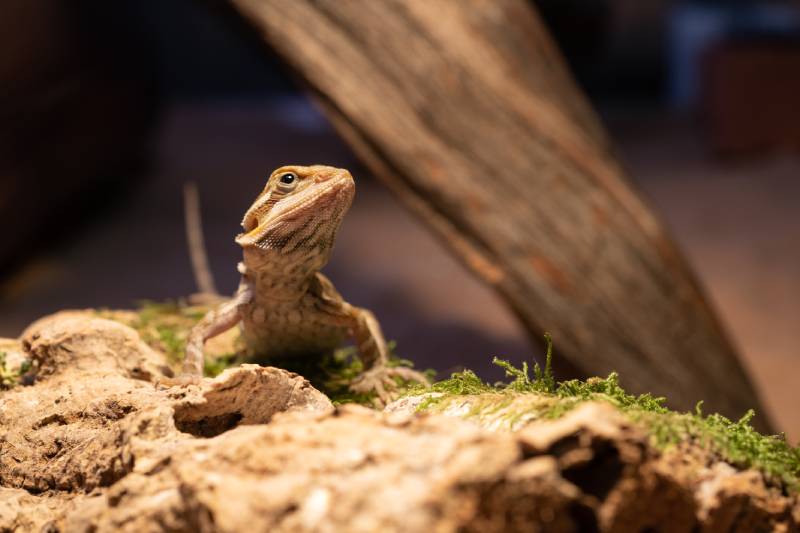
4. They’re quiet.
If you live with roommates or sound-sensitive neighbors, there’s no better pet than a bearded dragon. These sweet reptiles are very quiet. They will occasionally hiss if provoked, but even that sound is not loud.
5. They’re easy to handle.
Bearded dragons are a great size for handling and can get used to coming out of their tanks and hanging out on their humans.
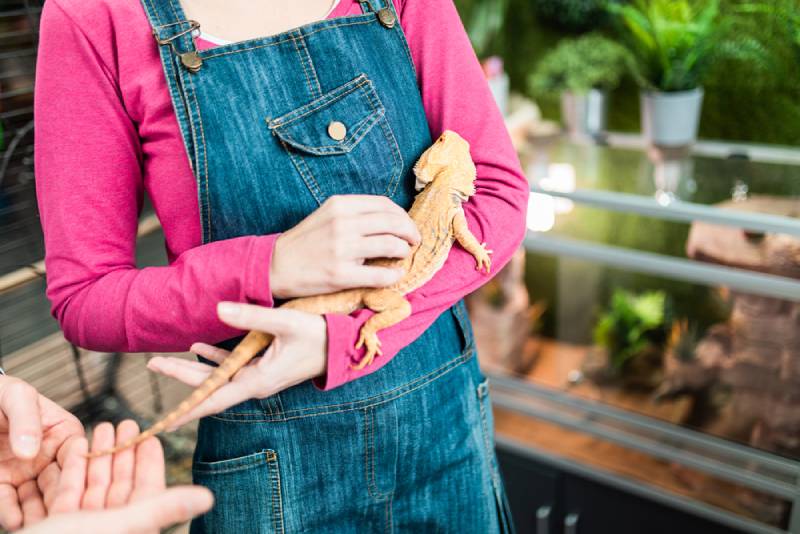
6. They come in a variety of colors.
While most people think bearded dragons are brown or tan, they actually come in a wide array of colors. For example, you can find beardies in red, gray, and orange. They also come in different morphs like leatherback (smooth backs), translucent (see-through spikes and scales), silkback (no spikes), and paradox (blotches of bright colors).
7. They’re affordable to adopt.
Bearded dragons are available in many pet stores and can be purchased directly from dedicated breeders. Most pet store beardies will run you about $50 to $150. You should expect to pay more than that if you adopt a rare color and morph.
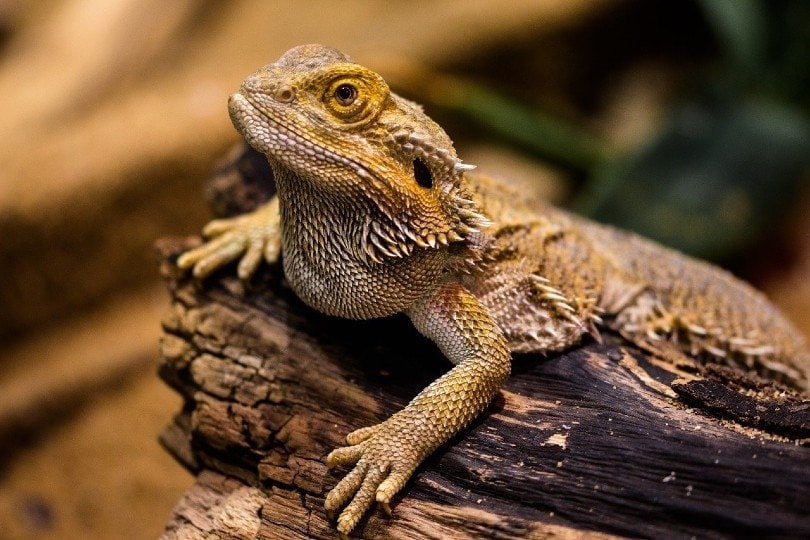
8. They have long lifespans.
Bearded dragons can live 10 years or more in captivity with proper care and husbandry. The oldest known beardie lived to be 18.
The beardie lifespan is comparable to other popular reptile companions, though they generally live longer than anoles (up to 7-year lifespan) and panther chameleons (up to 5 years)
9. They look cool.
Owning a bearded dragon is like having your very own pet dinosaur. They look like they crawled right out of the prehistoric era and into your home. They even look more dinosaur-like when they puff up their beards!
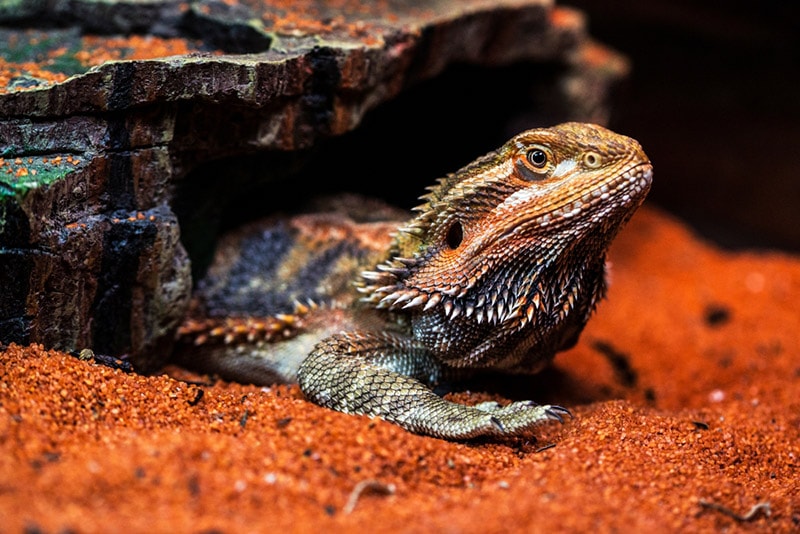
The 5 Reasons Bearded Dragons May Not Make Good Pets
1. They need a lot of space.
Though bearded dragons aren’t as big as other reptile species (we’re looking at you, water monitors), they can still grow between one and two feet long. As such, you’ll need a spacious tank to accommodate this size and your pet’s other supplies. Of course, the larger the tank you can provide, the happier your bearded dragon will be.
The minimum recommended enclosure size is 48 inches x 24 inches x 24 inches, but we strongly recommend going above and beyond. Some sources say that 60 inches x 36 inches x 36 inches is a much more appropriate starting point.
2. They’re expensive.
Bearded dragons are affordable pets to adopt, so acquiring one isn’t too budget-breaking. The exception to this rule is if you opt to adopt a rare morph, such as the Zero Morphy, which can cost up to $900. However, securing the supplies you’ll need to house and keep your reptile happy will add up quickly.
A high-quality enclosure in the appropriate size can run you hundreds of dollars. Then, you’ll need to buy proper lighting equipment to house your reptile’s bulbs and consider the cost of replacing the bulbs as necessary.
New reptile owners often opt for the kits sold in most major pet stores as they’re a cost-effective way to get all you need to get started in reptile keeping. However, we don’t typically recommend buying these start-up kits as the included tanks are often far too small and the lighting equipment inadequate.
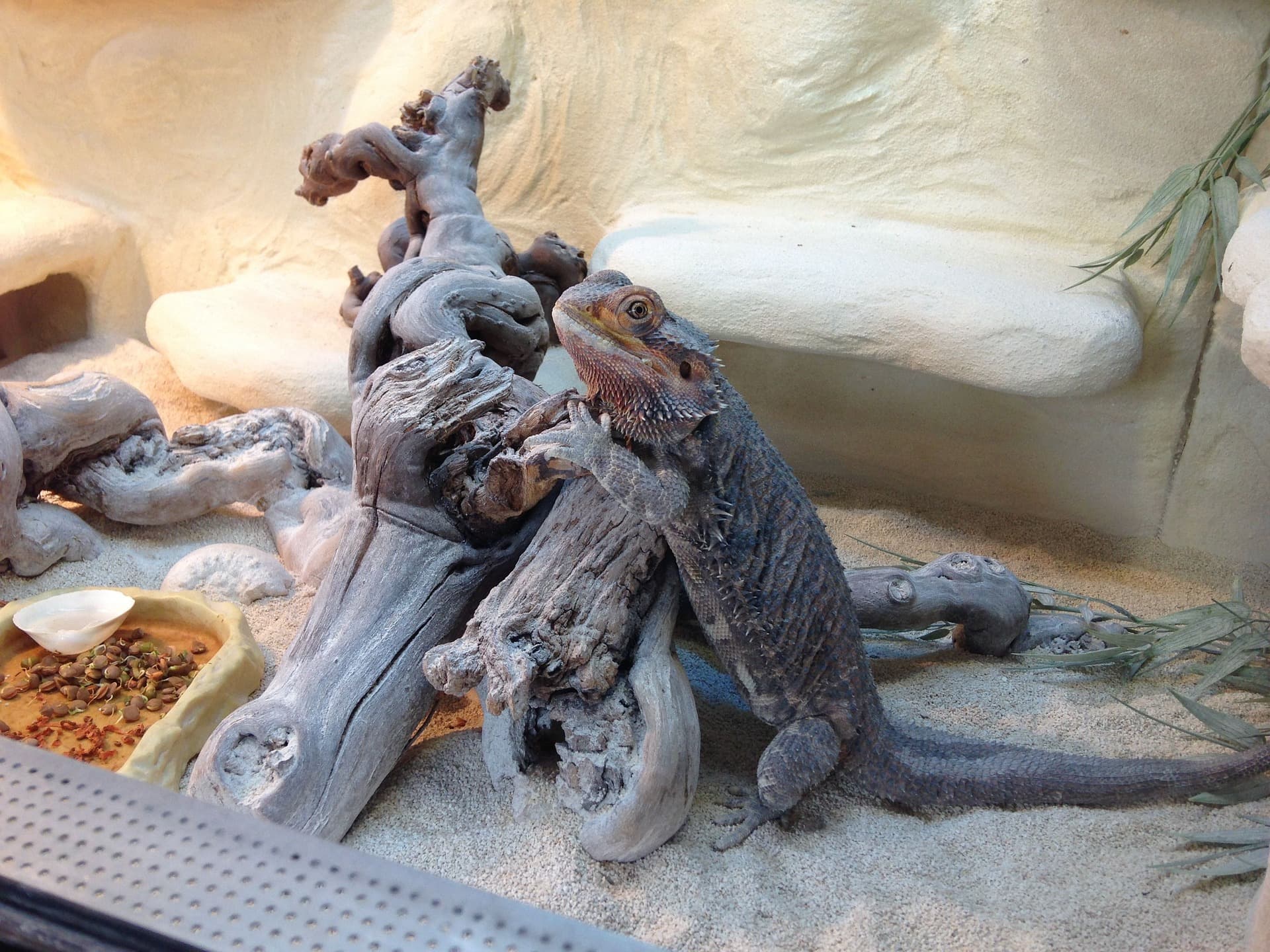
3. They have specific habitat requirements.
Bearded dragons are originally from the deserts of Australia and therefore need plenty of light ( full spectrum UVA/UVB), warmth ( a basking lamp) and low humidity.
The UVB bulbs don’t produce heat but will provide your beardie with proper amounts of UVB to properly synthesize vitamin D3, a vitamin essential for helping your pet absorb the calcium from its diet. Without the right amount of UVB, your pet could develop serious health problems like metabolic bone disease (MBD).
Beardies also need full-spectrum daylight lighting as they depend on bright, white light to promote activity, appetite, and general health.
In addition, bearded dragons are ectothermic and so are unable to control their body temperature without help from external sources. So you’ll need an appropriate basking lamp.
The enclosure needs to have a gradient from light to shade, with the light source overlapping with the basking area. You must monitor the temperature and humidity inside the habitat to ensure your beardie gets the light and heat it needs to thrive. This can be a challenge for new reptile owners, so you’ll need to familiarize yourself with these requirements well before bringing your new pet home.
4. They eat live insects.
Bearded dragons are omnivorous, so they’ll eat a lot of vegetables and insects. Appropriate animal-based protein sources include Dubia roaches, mealworms, and crickets.
Baby bearded dragons can eat up to 80 crickets in a single day, so you’ll often return to the store for insect refills.
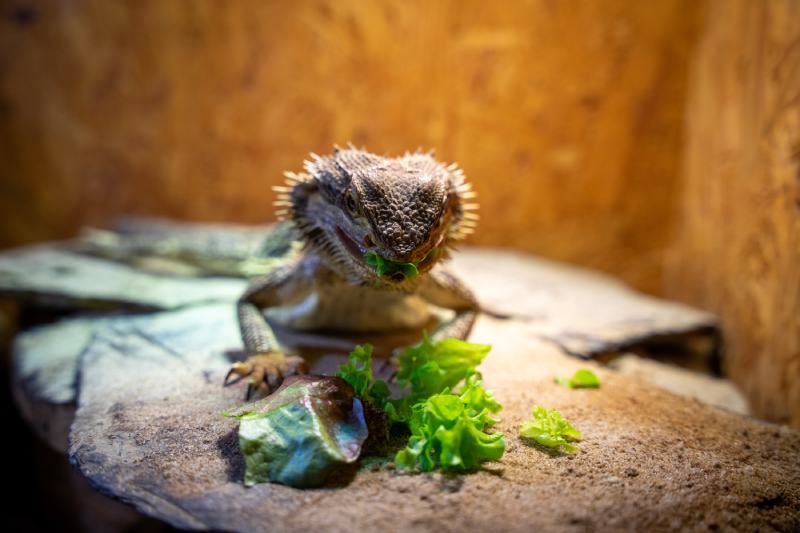
5. They hibernate.
Bearded dragons enter a hibernation-like state known as brumation during the year’s colder months. Beardies are ectotherms, which means they cannot regulate their body heat and rely on their environment to keep them at the appropriate temperature. Desert winters are far too cold for them, so wild beardies burrow somewhere safe under the cold weather passes.
Brumation can last several months and sometimes begin even before the cold weather arrives. Many signs of brumation can also be signs of health issues so it is important to carefully monitor your Beardie.
Final Thoughts
As you can see, there are a lot of pros and cons to keeping a bearded dragon as a pet. Before taking the plunge and adopting one, ensure you’ve weighed the advantages and disadvantages. There’s a steep learning curve for bearded dragon husbandry, and we don’t recommend adopting one until you fully understand what’s required to keep your new pet happy and healthy.
Featured Image Credit: New Africa, Shutterstock


